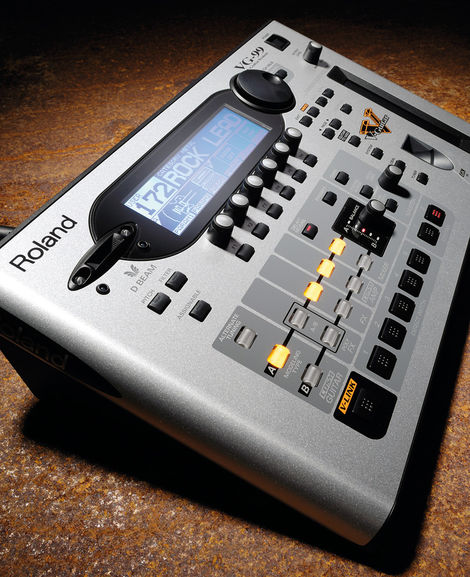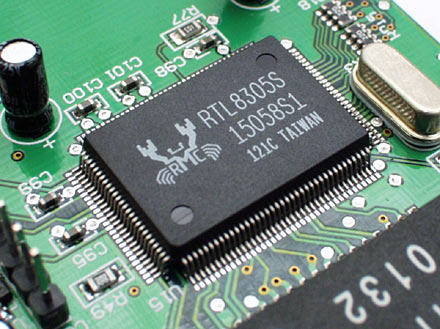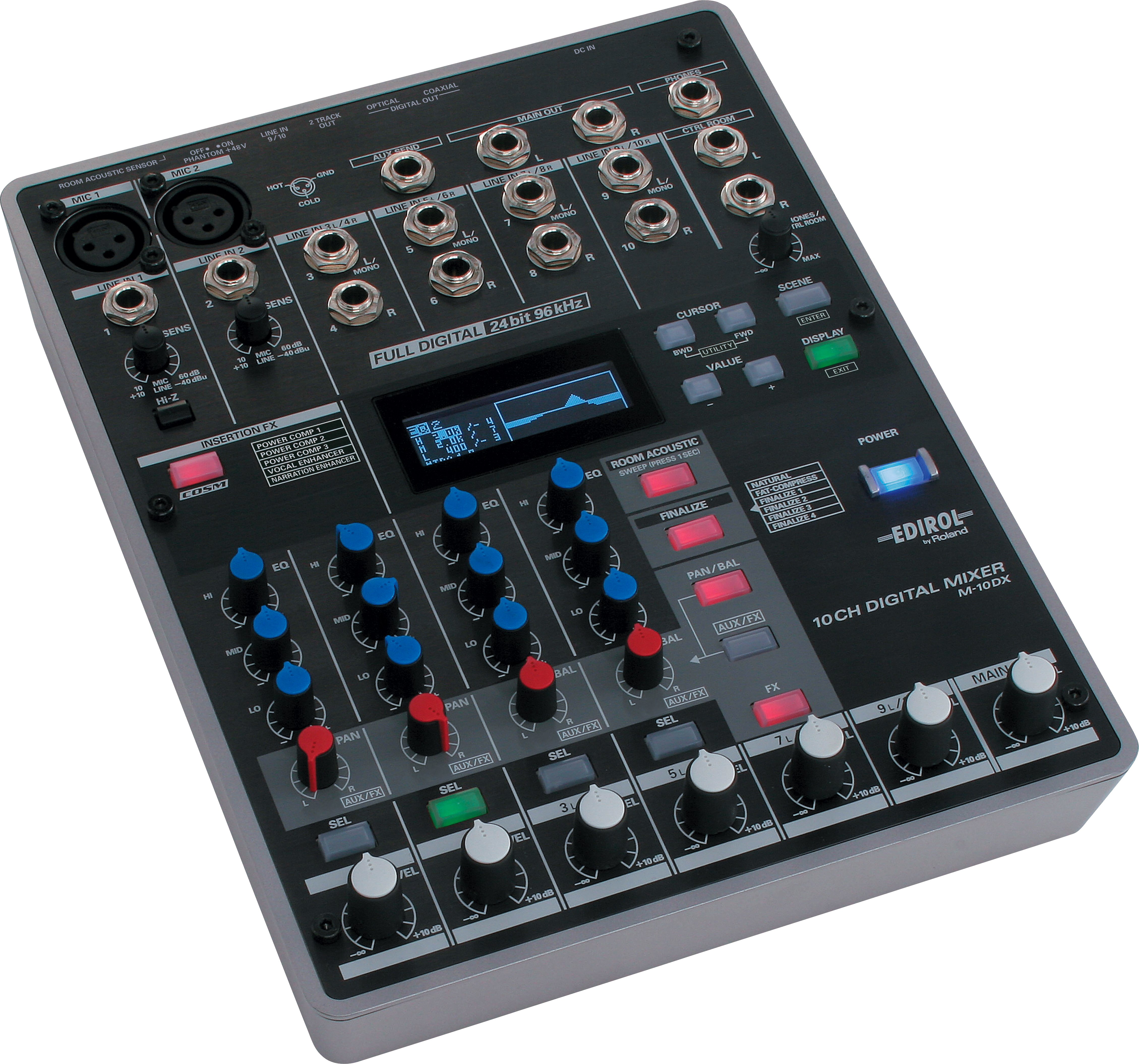Software Audio Production Blog, for beginners |
|
|
|
|
|
| Jun 5 2011, 08:28 PM |
|
Hey guys, I'm trying to make a small blog here that will combine some of my older posts with new material in wish to help the beginners to make their first steps towards more professional software recording:
Digital Processor for Guitar: Processor is a digital unit that changes the way you guitar sounds. Example of a processor is Boss GT8, but there are cheaper models, varying in price from 20-30$ to thousands of dollars. The reason you would need a processor is because they can convert guitar unbalanced signal into a balanced one which your card can take. They also process your sound, emulating famous guitar gear, and convert your signal into digital one. Here are some processors ranging from cheaper to more expensive ones:  Zoom G2  Line 6 POD XT Live  Roland VG99  TC Electronics G System  Fractal Audio Axe-FX Ultra Computer Audio chips can be roughly categorized like this: 1. integrated cards - these cards are of the worst quality. You get them with your motherboard and they should serve mainly as a worst case scenario backup situations. If you consider the fact that you get them for free bundled with the motherboard, you can presume what quality they have. Nevertheless newer motherboard models have more advanced chips and these cards are now enough for mainstream users, and some pilot recording projects. This is the looks of one chip called Realtek that is often used for integrated solutions:  2. mainstream pc (aka gamer) cards - these cards are more expensive than integrated ones, they offer better sound quality, more clearer sound, and more accurate sound response. They also have bigger processing power than integrated ones, and the memory of their own, which enables them to add some effects on the sound of the computer. A lot of consumer cards will have options for enabling reverberation or chorus effects that can enhance gaming experience. The example of these cards are Creative Sound Blaster Series as one of the best selling cards on the market. Here's example of the high-end consumer market gamer card:  3. music production cards - these cards are mainly intended for music producing purposes, and branch into several categories, but most popular for beginners are audio interfaces. These interfaces have all the inputs and outputs for connecting instrument to computer and recording it with no problems. Interfaces are made mainly as external products, which means they serve as a external sound card with USB or Firewire connection. Here's an example of a cheap Line 6 interface, notice the guitar input and modeling software that you get with the device:  There are also other music production systems, both PCI, external or combined solutions, but let's not go in-depth about it now. If you wanna record sound on your computer, the wisest thing to do is to buy a small cheap guitar interface, like this Line 6 Toneport GX is on the last picture. This will get you a solid working sound card for recording, and program that has different guitar effects that you can apply to your guitar when recording in real-time. Couple of words about latency: In real-time speaking in audio production terms, means that there is a small amount of latency involved. In the end I wanna say that you can record things with your integrated card as well, just don't expect that good performance and you will need a device that will transfer your guitar unbalanced signal to line-level one that sound card can take via Line In. If you buy a cheap interface you will not have these problems and can record much better, and plug your guitar straight into interface. The latency will be small and you will have effects to color the sound a bit. In the following posts I will go through software and other interesting things you should know about making music at home! This post has been edited by Ivan Milenkovic: Aug 18 2011, 06:36 PM -------------------- - Ivan's Video Chat Lesson Notes HERE
- Check out my GMC Profile and Lessons - (Please subscribe to my) YouTube Official Channel - Let's be connected through ! Facebook! :) |
|
|
||
 |
Replies
|
|
|
|
| Jun 17 2011, 09:11 AM |
|
Let's talk a bit about the connections today!
We all need to connect our gear in various ways, and there are always more than one piece of gear that we can connect, wetter it's only PC and amplifier line out. Many people connect these devices, and get noise problems, or even fried cards, and are not sure why. It turns out not all the connectors work on the same "level", as I will explain soon. LEVELS (VOLTAGES): As far as analog signals go, there are several different standards that had to be made, relative to the strength of the output signal from the source. Today, we use 3 of these standards: Line-level, Mic-level and Instrument-level. Line Level: One that is most commonly in use is "Line Level". It's used to standardize the voltage/strength of the input/output signals, in order to make connecting of various audio gear possible. Most gear that has Line Level inputs are CD and DVD players, consumer electronics like MP3 players, or integrated/consumer PC audio cards. The standard for Line Level signal is around 750 milivolts. What this means is that all the outputs or inputs that are marked as "Line", are usually operating at this voltage. For example, with intergrated sound cards you can see the arrow sign, or "Line In" or "Line Out" sign. This means that you can connect this line level output to another device that is operating at line signal voltage at their connectors. Mixing consoles usually have various inputs available, because of their function, so they usually have labeled out line level inputs as well. On most mixers, the last 4 or 8 channels (ones without XLR connectors, are usually operating only at 750mV (line-level). There are two types of line level: consumer line level is at -10dBV professional line level is at +4dBu (or dBm) In order not to get you confused with dBV and dBu values, it is just important to understand what goes where. Here are some common connectors and what line level they operate at: RCA (phono) connectors are usually -10dBV. XLR connectors are usually +4dBu (Mic Level). TRS quarter inch jack plugs can be either -10dBV or +4dBu, depending on the use. Mic Level: Microphones are operating at much lower voltages then line level devices, around 1mV - 80mV. This signal is too weak and prone to external interference. This means that a preamp is being used for microphones in order to get the mic-level low voltage signal to line-level high voltage signal. Instrument Level: Instrument level is not a standardized voltage, but can vary depending on the instrument's output, and it's usually somewhere between mic and line level voltages. Here's a hi-res picture of a mixer that has mic-level and line-level inputs:  As you can see, XLR inputs are low voltage mic-level inputs, and they can handle lower voltage power, which means that you can "burn" the inputs by using the higher voltage sources like instruments or line-level devices. Preamps are very sensitive, and serve to amplify the low voltage mic signals to appropriate 750mV line-level. Also, notice that there are lots of line-level inputs available on the mixer. All these serve for standardized 750mV equipment. ______________________ In the next article I will write about impedance and balanced/unbalanced connections, which are closely connected to levels/voltages! -------------------- - Ivan's Video Chat Lesson Notes HERE
- Check out my GMC Profile and Lessons - (Please subscribe to my) YouTube Official Channel - Let's be connected through ! Facebook! :) |
|
|
||
Posts in this topic
 Ivan Milenkovic Software Audio Production Blog Jun 5 2011, 08:28 PM
Ivan Milenkovic Software Audio Production Blog Jun 5 2011, 08:28 PM
 Daniel Realpe Very nice! Excellent post Ivan! Jun 5 2011, 10:12 PM
Daniel Realpe Very nice! Excellent post Ivan! Jun 5 2011, 10:12 PM
 quadrium Awesome article here. I'm sure this will help ... Jun 5 2011, 10:23 PM
quadrium Awesome article here. I'm sure this will help ... Jun 5 2011, 10:23 PM
 Todd Simpson Great post! For players jumping in to the worl... Jun 7 2011, 03:19 AM
Todd Simpson Great post! For players jumping in to the worl... Jun 7 2011, 03:19 AM
 Ivan Milenkovic OK, let's continue with connections!
IMP... Jun 19 2011, 09:19 PM
Ivan Milenkovic OK, let's continue with connections!
IMP... Jun 19 2011, 09:19 PM
 Daniel Realpe this is excellent Ivan, thank you! Jun 19 2011, 11:13 PM
Daniel Realpe this is excellent Ivan, thank you! Jun 19 2011, 11:13 PM
 Ivan Milenkovic Cheers mate, more to come very soon! Jun 21 2011, 10:21 PM
Ivan Milenkovic Cheers mate, more to come very soon! Jun 21 2011, 10:21 PM
 Fran Omg how did I miss this thread! This is tasty ... Jun 21 2011, 10:24 PM
Fran Omg how did I miss this thread! This is tasty ... Jun 21 2011, 10:24 PM
 Ivan Milenkovic Thanks a lot mate. I'll do some modifications ... Jun 25 2011, 06:33 PM
Ivan Milenkovic Thanks a lot mate. I'll do some modifications ... Jun 25 2011, 06:33 PM
 Ivan Milenkovic After all this technical mumbo jumbo about connect... Jun 26 2011, 12:35 PM
Ivan Milenkovic After all this technical mumbo jumbo about connect... Jun 26 2011, 12:35 PM

 Todd Simpson Great posts This is stuff that every guitar playe... Jun 26 2011, 05:56 PM
Todd Simpson Great posts This is stuff that every guitar playe... Jun 26 2011, 05:56 PM

 mguimaraes777 QUOTE (Ivan Milenkovic @ Jun 26 2011, 09... Nov 29 2011, 03:05 PM
mguimaraes777 QUOTE (Ivan Milenkovic @ Jun 26 2011, 09... Nov 29 2011, 03:05 PM
nnn

 Sinisa Cekic Are you sure that this topic should be only for be... Jun 26 2011, 10:04 PM
Sinisa Cekic Are you sure that this topic should be only for be... Jun 26 2011, 10:04 PM
 quadrium This is awesome Ivan! Thank you for sharing th... Jun 26 2011, 10:31 PM
quadrium This is awesome Ivan! Thank you for sharing th... Jun 26 2011, 10:31 PM
 Fran OK, I'm adding all this info into our wiki in ... Jun 29 2011, 04:39 PM
Fran OK, I'm adding all this info into our wiki in ... Jun 29 2011, 04:39 PM
 Ivan Milenkovic Thanks a lot Fran!
I'm continuing the a... Jul 27 2011, 05:07 PM
Ivan Milenkovic Thanks a lot Fran!
I'm continuing the a... Jul 27 2011, 05:07 PM
 Ivan Milenkovic 3. Plugging guitar into processor, connecting the ... Aug 18 2011, 06:32 PM
Ivan Milenkovic 3. Plugging guitar into processor, connecting the ... Aug 18 2011, 06:32 PM
 Ivan Milenkovic 4. Connecting the guitar into audio card with Hi-Z... Sep 1 2011, 03:44 PM
Ivan Milenkovic 4. Connecting the guitar into audio card with Hi-Z... Sep 1 2011, 03:44 PM
 Fran WoW at that Ivan!
Bookmarking this to update ... Sep 1 2011, 03:48 PM
Fran WoW at that Ivan!
Bookmarking this to update ... Sep 1 2011, 03:48 PM
 Bossie Well 15 years ago i ate guitarmagazines ..i knew e... Sep 3 2011, 09:40 PM
Bossie Well 15 years ago i ate guitarmagazines ..i knew e... Sep 3 2011, 09:40 PM
 tonymiro QUOTE Fortunately, audio interfaces and audio card... Sep 4 2011, 12:48 PM
tonymiro QUOTE Fortunately, audio interfaces and audio card... Sep 4 2011, 12:48 PM

 Ivan Milenkovic QUOTE (tonymiro @ Sep 4 2011, 01:48 PM) N... Sep 4 2011, 03:21 PM
Ivan Milenkovic QUOTE (tonymiro @ Sep 4 2011, 01:48 PM) N... Sep 4 2011, 03:21 PM
nnn

 Fran Here's the article in the wiki, with all the n... Sep 22 2011, 04:28 PM
Fran Here's the article in the wiki, with all the n... Sep 22 2011, 04:28 PM
 Ivan Milenkovic great, continuing very soon, and doing some multim... Sep 23 2011, 03:05 PM
Ivan Milenkovic great, continuing very soon, and doing some multim... Sep 23 2011, 03:05 PM
 Ivan Milenkovic Back to the story of software audio production... Nov 20 2011, 09:29 PM
Ivan Milenkovic Back to the story of software audio production... Nov 20 2011, 09:29 PM

 Todd Simpson This is another AWESOME post from Ivan detailing t... Nov 28 2011, 10:10 PM
Todd Simpson This is another AWESOME post from Ivan detailing t... Nov 28 2011, 10:10 PM
nnn

 mguimaraes777 Ivan, it's so great idea putting everything to... Nov 28 2011, 08:38 PM
mguimaraes777 Ivan, it's so great idea putting everything to... Nov 28 2011, 08:38 PM
 Ivan Milenkovic Hey glad you like it man! Nov 28 2011, 08:58 PM
Ivan Milenkovic Hey glad you like it man! Nov 28 2011, 08:58 PM
 Ivan Milenkovic It's no problem man, don't worry about it.... Nov 30 2011, 10:01 PM
Ivan Milenkovic It's no problem man, don't worry about it.... Nov 30 2011, 10:01 PM
 Ivan Milenkovic Once we choose our DAW, it's time to put it in... Dec 30 2011, 06:32 PM
Ivan Milenkovic Once we choose our DAW, it's time to put it in... Dec 30 2011, 06:32 PM
nnn
nnn
3 User(s) are reading this topic (3 Guests and 0 Anonymous Users)
0 Members:















